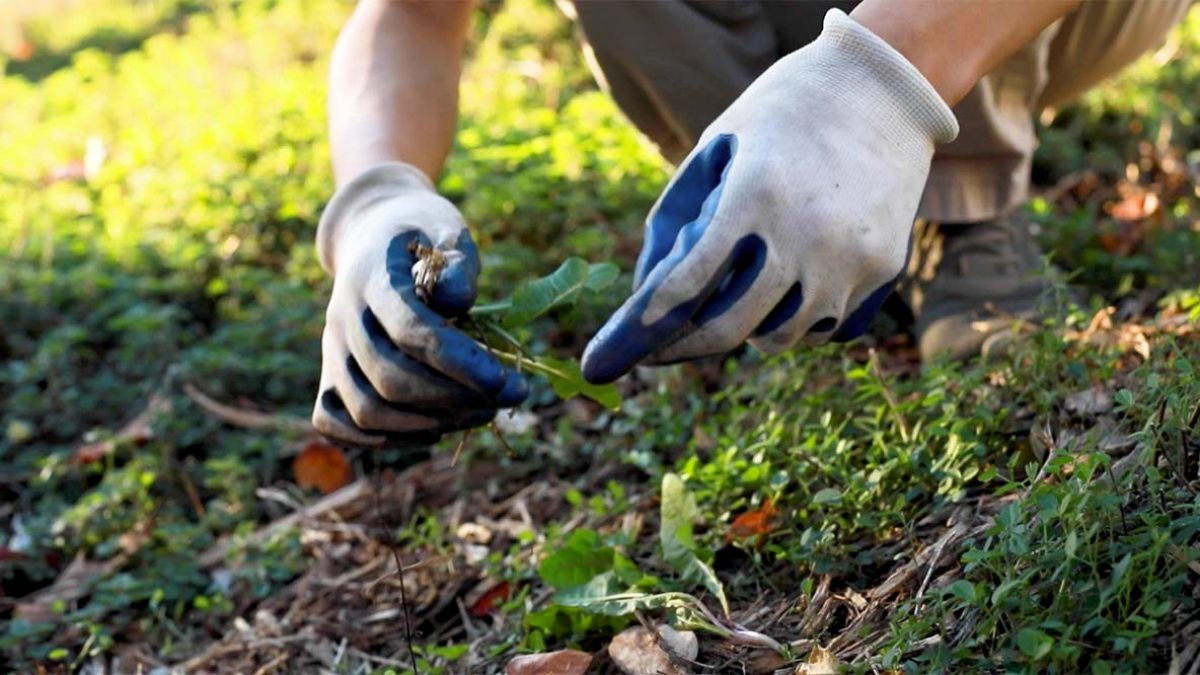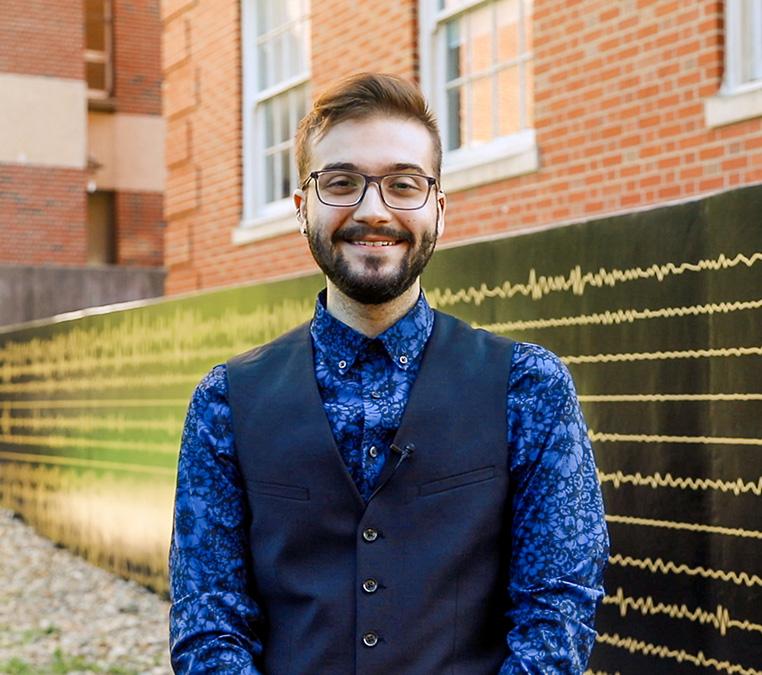The physician’s garden
The Gardening and Ethnobotany in Academia Project is a student organization that maintains the Sam W. Hitt Medicinal Garden on campus and encourages students and faculty to explore the relationship between plants and people — medicinally, economically and culturally at a local and global scale.

Press the play button to watch the video
Like many Carolina students, Cameron Prince was exploring Heel Life looking for a club to join when he came across a student organization that immediately stood out to him: The Gardening and Ethnobotany in Academia Project.
Prince, who knew he wanted to get involved with gardening on campus, was intrigued.

Carolina senior Cameron Prince joined the Gardening and Ethnobotany in Academia Project to combine his interests in science and gardening. (Photo by Sarah Wood/UNC-Chapel Hill)
“I found GAEA, and I figured with me having a background in biology, it would just be something really cool and enjoyable for me to do,” says Prince, who is now a senior studying chemistry and biology and serves as the president of the student organization.
The Gardening and Ethnobotany in Academia Project is a student organization that maintains the Sam W. Hitt Medicinal Garden on campus and encourages students and faculty to explore the relationship between plants and people — medicinally, economically and culturally at a local and global scale. The group explores the ways plants influence human culture and human creation, not just for medicinal purposes but also for rituals and even literature.
The garden itself is a project out of biology professor Alan Jones’ “The Physician’s Garden” course, which combines human cell biology with botany. The students help plan the garden and use it in their class, while the Tar Heels behind the Gardening and Ethnobotany in Academia Project care for the plants.
For Prince, the Gardening and Ethnobotany in Academia Project has been a way to destress and reconnect with nature amidst our low stone walls and brick walkways.
“Just going out to the workdays and mulching the gardens or removing weeds is a really good escape from the stress of school,” he said. “I like just being in the garden being surrounded by plants. Amidst all the concrete and the bricks, we have the lushness of the gardens, which is really nice.”
Most importantly, working with the Gardening and Ethnobotany in Academia Project has helped Prince discover his passion for botany. He plans to utilize all that he has learned from working with the student group when he attends graduate school next year.
“GAEA has been the reason I decided to pursue science in botany,” he says. “I am planning on moving to Spain next year for graduate school in botany. GAEA has been showing me my passion all along and helped me figure out what I want to do in the future.”
Learn more about the Gardening and Ethnobotany in Academia Project




